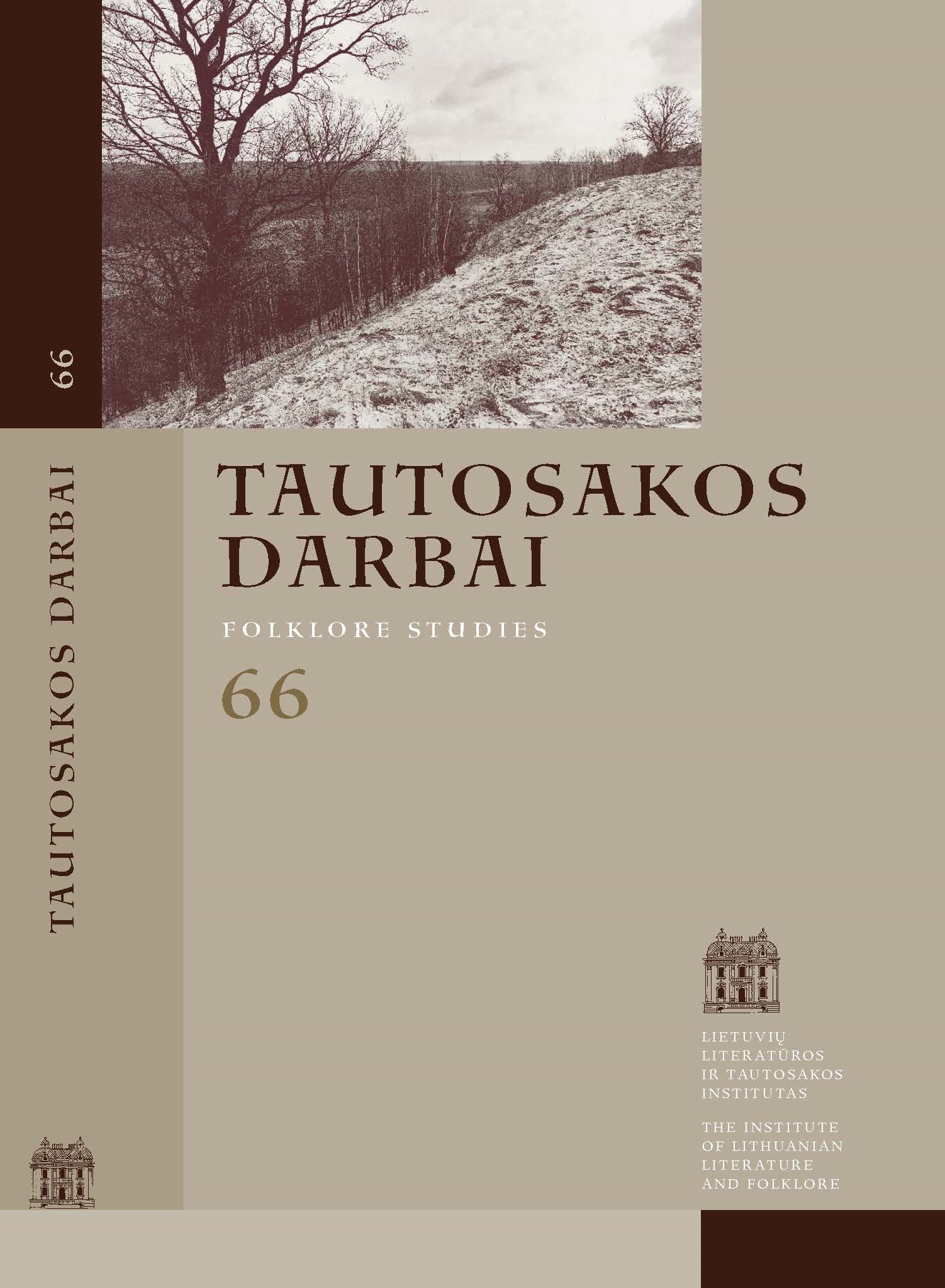Witchcraft in the Lithuanian Village Community in the Beginning of the 21st Century (on the Folklore Fieldwork Material)
Abstract
The article is based on the materials collected during four folklore fieldwork sessions that took place in the different regions of Lithuania in the first decade of the 21st century. The aim is to present popular beliefs and legend-like narratives related to harmful magic that are still preserved in the Lithuanian villages, and the informants’ attitudes towards them. The point of departure for the analysis was the category of the “strange people” discussed by Norbertas Vėlius in his book “Mythical Beings of the Lithuanian Legends”. However, as folklore data from the beginning of the 21st century reveals, some subcategories of these “strange people” discerned in the book are by now totally extinct from the living tradition (like werewolves or “soul-seers”), while others, including witches, wizards, evil-eyed people and partly, charmers, have inextricably merged together. Thus the article focuses on a general, overlapping phenomenon, namely witchcraft. Having taken into account the universal character of this phenomenon, the author strives to discern its peculiarities that are typical to the Lithuanian village communities. Using comprehensive analysis of the figure of the neighborhood witch developed by the Slovenian folklore researcher Mirjam Mencej, the author discusses typical features and activities of this quasi-mythical being, as reflected in the Lithuanian fieldwork material, i. e. harming of livestock, love magic, curses, and evil-eye. The neighborhood witch is perceived as acting within the framework of the opposition between one’s own and other, moreover, representing both sides of it. Precisely this, according to the author, induces great fear and anxiety that other members of the community exhibit towards this figure, at the same time resulting in its exceptional persistence and longevity.

This work is licensed under a Creative Commons Attribution 4.0 International License.
Downloads
Most read articles in this journal
- Lina Būgienė, Keturioliktieji „Profesoriaus Norberto Vėliaus skaitymai“ – apie velnius ir velniavas , Tautosakos darbai: Vol. 65 (2023): Tautosakos darbai
- Lina Būgienė, About Grandma and Other Things , Tautosakos darbai: Vol. 64 (2022)
- Austė Nakienė, Radvilė Racėnaitė, Vita Ivanauskaitė-Šeibutienė, Rytis Ambrazevičius, Lina Būgienė, Gražina Kadžytė, Rima Visackienė, Irena Žilienė, Andželika Jakubynienė, Chronicle , Tautosakos darbai: Vol. 52 (2016)
- Lina Būgienė, Folklore and Politics: Inherent Connections and Entrenched Stigmas , Tautosakos darbai: Vol. 61 (2021)
- Lina Būgienė, Martynas Vingrys, Irena Snukiškienė, Dalia Urbanavičienė, Gražina Kadžytė, Jurga Sivickaitė-Sadauskienė, Information , Tautosakos darbai: Vol. 64 (2022)
- Austė Nakienė, Daiva Vaitkevičienė, Vita Džekčioriūtė-Medeišienė, Gražina Kadžytė, Aurimas Bačiulis, Vida Savoniakaitė, Lina Būgienė, Chronicle , Tautosakos darbai: Vol. 55 (2018)
- Vita Džekčioriūtė, Aušra Žičkienė, Jūratė Šlekonytė, Gražina Kadžytė, Jurgita Ūsaitytė, Lina Būgienė, Daiva Vyčinienė, Chronicle , Tautosakos darbai: Vol. 48 (2014)
- Lina Būgienė, Vita Ivanauskaitė-Šeibutienė, Akvilė Sadauskienė, Information , Tautosakos darbai: Vol. 63 (2022)
- Vida Norvaišienė, Dainius Razauskas, Rūta Žarskienė, Vita Ivanauskaitė-Šeibutienė, Lina Būgienė, Chronicle , Tautosakos darbai: Vol. 49 (2015)
- Lina Būgienė, Greta Paskočiumaitė defended her thesis “Lithuanian Partisan War Narrative: a Study of Three Generations” , Tautosakos darbai: Vol. 67 (2024): Tautosakos darbai




